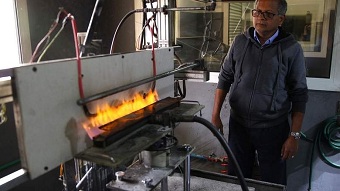Major loss of property and life can be avoided by eliminating non-certified cables, according to a fire safety expert. To decrease fire incidents in the UAE, the civil defence authorities have been working closely with factories and cable manufacturing companies to ensure fire resistant products are installed in public places. “Non-certified cables can produce poisonous gases with black smoke obscuring visibility in the event of a fire,” said Dr Dragan Andelkovic, chief engineer at Ducab.
“The possibility of a major loss in lives due to cable malfunction is the reason behind the establishment of the fire testing lab to ensure all cables are subject to extensive testing during each phase of production. The facility offers various fire and smoke tests of cables especially installed for power supply to equipment used in fire-fighting, elevators, sprinkler pumps and in large complex buildings, where fire strategy involves evacuation of occupants in a phased manner.
“Low Smoke and Zero Halogen features are also put to test to ensure the cable does not emit black smoke or toxic halogen gases, providing for better visibility in the event of a fire and ensuring that sensitive equipment in the surrounding areas is not adversely affected.
“Through the tests, we ensure that all material used will behave predictably in the unfortunate instance of a fire,” said Andelkovic. The lab runs around six tests a day, for a duration that varies to up to three hours, subjecting cable samples to the direct impact of fire, mechanical shock and a water jet simultaneously for different time-related periods, between 30 to 180 minutes.
The intensive tests include the vertical flame, CWZ (fire, water and mechanical impact), smoke density measurement and fire resistance tests where the cables are verified for circuit integrity during a fire. “In principle, we run about 10 tests per day, but smaller cables take one minute of testing, while the larger ones that supply corridors and emergency lighting, for example, can take up to three hours of testing,” said Dr Dragan Andelkovic, chief engineer at Ducab. He stated that the key is to subject cables to real-life fire conditions where larger ones can withstand up to two hours of fire without propagation.
Two types of cables are subjected to different tests. The cables that prevent flame propagation are tested without power supply, while the flame resistant or fire survival cables operate in normal conditions transferring power or signals are tested under mechanical impact, water and flame all the time.








